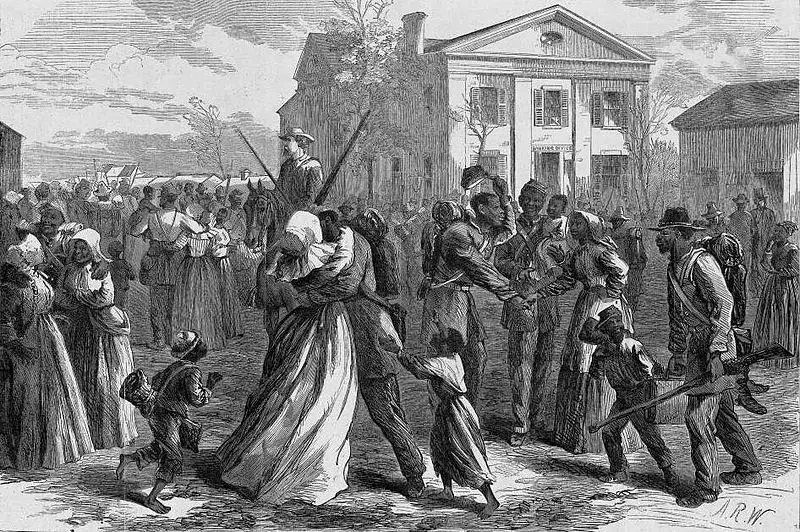Cultural clashes
There were numerous cultural clashes in the United States from 1800 to 1850. The culture of the new nation was changing rapidly from year to year.
Specific movements started, which clashed with other movements. People clashed with people over religious beliefs, slavery, work, and expansion. As more and more immigrants entered the United States, cultures clashed between people from Germany and Ireland as well as native-born people in the United States.
Temperance Movement
The Temperance Movement was one of the several cultural clashes that took place in the United States from 1800 to 1850. The movement focused on the prohibition of alcohol.
It was spawned from the Second Great Awakening and the increased industrialization of the nation. The movement was supported by the Elite and middle class of the United States. Wage workers in factories were drawn to consume alcohol after long hours of work.
Many factories were owned by middle-class people. They felt the consumption of alcohol led to a loss of productivity on the job.

Abolition Movement
The Abolition Movement was also supported by the middle class and elite families. By 1820 slavery was outlawed in most northern states. But slavery flourished in the southern states. Slaveholders argued for slavery in different ways.
Some argued slaves were inferior people that needed to be taken care of by owners. Others argued that living conditions for slaves were better in the United States than the conditions in Africa. Lastly, the southern slaveholders argued that the industrialization process in the North led to wage slavery from workers in the factories. Abolitionists argued that all men were created equal under the Constitution. They believed slavery denied this basic right.
Most large plantations in the South needed slaves to work the land. In the northern states, factories needed cotton, indigo, and other crops for manufacturing textiles. The divide between the two ideologies culminated with the Civil War.

Workers versus owners
With the rise of industrialization in the North, both men and women exited small rural areas in search of work. Working conditions in factories were hard.
Management and owners demanded production, and workers demanded compensation for increased output. It was not uncommon for a wage worker to be at the factory for more than 14 hours a day six or seven days a week.
The only action workers could take to strike. Owners then hired replacement workers known as scabs. Strikes were common in the northern industrialized cities with factories. Strikes frequently turned violent between workers and hired individuals from the owners and managers.
Wage workers in factories began to form unions in the 1830s to help improve working conditions and wages. Unions were formed for individual groups of wage workers and artisans.
Immigrants
As the rise of immigrants entering the United States from 1800 to 1850, there were cultural clashes between groups. German and Irish immigrants made up a majority of the new immigrants in the United States.
Many sought jobs within the factories, and others started farming on small patches of land. The immigrants tended to cluster together in the frontier and in urban centers.
The vast amount of immigration made nativists or natural-born citizens mad. These people viewed the new immigrants as a rival for jobs in the factories and for land.
Towards the middle of the 1800s, a new political group formed called the Know-Nothings. This group of people mainly resided within urban centers where factory jobs were available. The Know-Nothings were scared that new immigrants took their jobs at lower wages.
The movement was instrumental in gaining political power in local legislations. With their newfound power, the Know-Nothings went on the attack against immigrants and immigration.
Facts about Cultural Clashes in the United States from 1800 to 1850
- There were several cultural differences, both ethnic and racial, which led to conflict in the United States from 1800 to 1850.
- The Temperance and Abolition Movements were spawned from the Second Great Awakening.
- The Temperance and Abolition Movements were supported by the Elite and middle-class people.
- Slavery became a cultural issue in the northern and southern states. The northern states believed slavery went against the Constitution. The southern states believed slaves were inferior people, and conditions on plantations were better for them than in Africa.
- Labor and businesses fought over working conditions, wages, and a number of days worked per week. This led to cultural clashes with labor unions in the 1830s.
- Urban centers became home to people searching for work in factories. People from the frontier and urban residents were at odds with each other over jobs.
- Immigrants from Germany and Ireland were targets of the Know-Nothing party or nativists in the United States.
- Cultural Clashes along the frontier increased between settlers and Native American tribes as Westward Expansion increased toward the middle of the 1800s.
Questions
Which socioeconomic classes supported the Temperance Movement?
Elite and middle class
What helped spawn the rise of the Temperance and Abolition Movements?
The Second Great Awakening
What were two groups of immigrants targeted by the Know-Nothing party?
German and Irish
Cultural clashes in the workplace and factory helped the rise of what labor institutions?
Unions
What did the southern states use as an argument for slavery?
Slaves were inferior people



